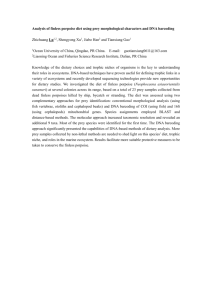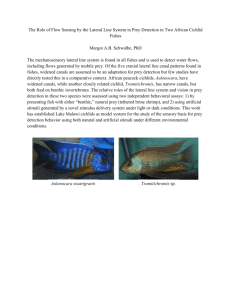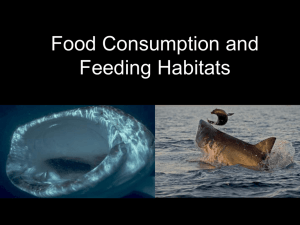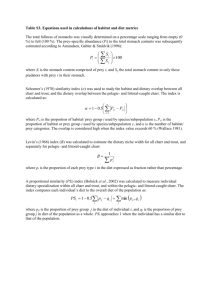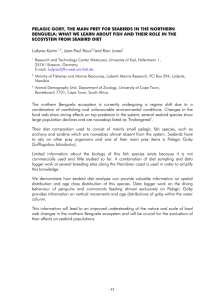Online Resource 1 - Appendix A - Springer Static Content Server
advertisement
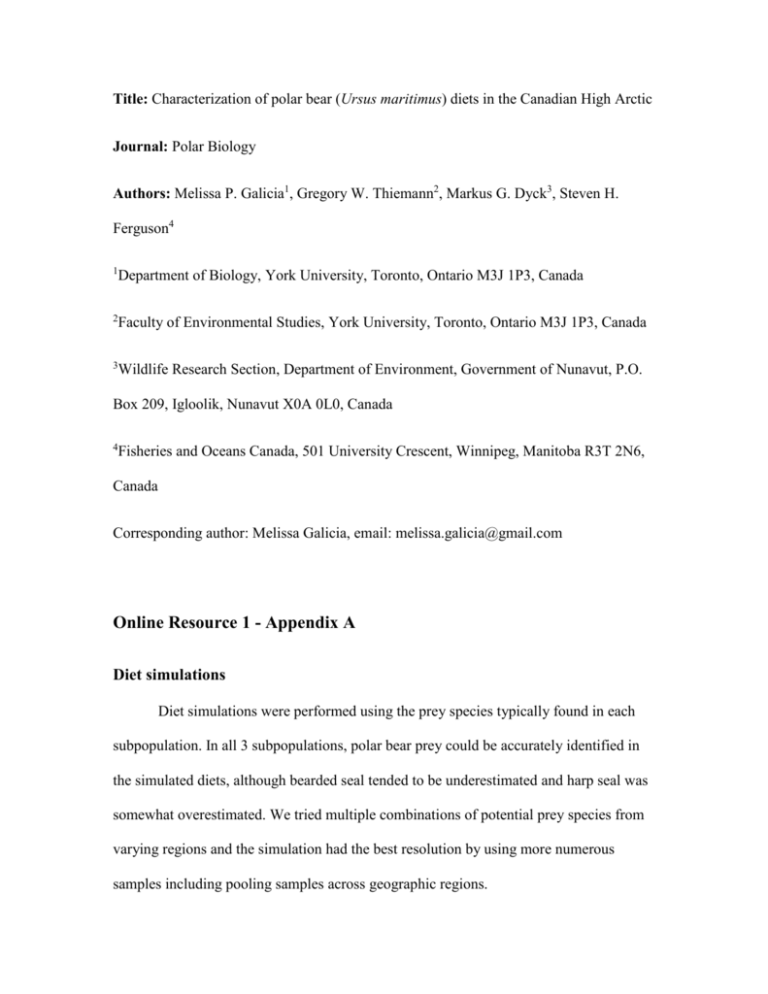
Title: Characterization of polar bear (Ursus maritimus) diets in the Canadian High Arctic Journal: Polar Biology Authors: Melissa P. Galicia1, Gregory W. Thiemann2, Markus G. Dyck3, Steven H. Ferguson4 1 Department of Biology, York University, Toronto, Ontario M3J 1P3, Canada 2 Faculty of Environmental Studies, York University, Toronto, Ontario M3J 1P3, Canada 3 Wildlife Research Section, Department of Environment, Government of Nunavut, P.O. Box 209, Igloolik, Nunavut X0A 0L0, Canada 4 Fisheries and Oceans Canada, 501 University Crescent, Winnipeg, Manitoba R3T 2N6, Canada Corresponding author: Melissa Galicia, email: melissa.galicia@gmail.com Online Resource 1 - Appendix A Diet simulations Diet simulations were performed using the prey species typically found in each subpopulation. In all 3 subpopulations, polar bear prey could be accurately identified in the simulated diets, although bearded seal tended to be underestimated and harp seal was somewhat overestimated. We tried multiple combinations of potential prey species from varying regions and the simulation had the best resolution by using more numerous samples including pooling samples across geographic regions. FA signature (%) Figure A. Results of simulation studies for Baffin Bay, Gulf of Boothia, and Lancaster Sound prey data sets. The results are presented as boxplots, showing the 25th, median, and 75th percentiles of the 1000 diet estimates and solid circles represent outliers. The specified diet composition is represented as ‘a’ in plots.
